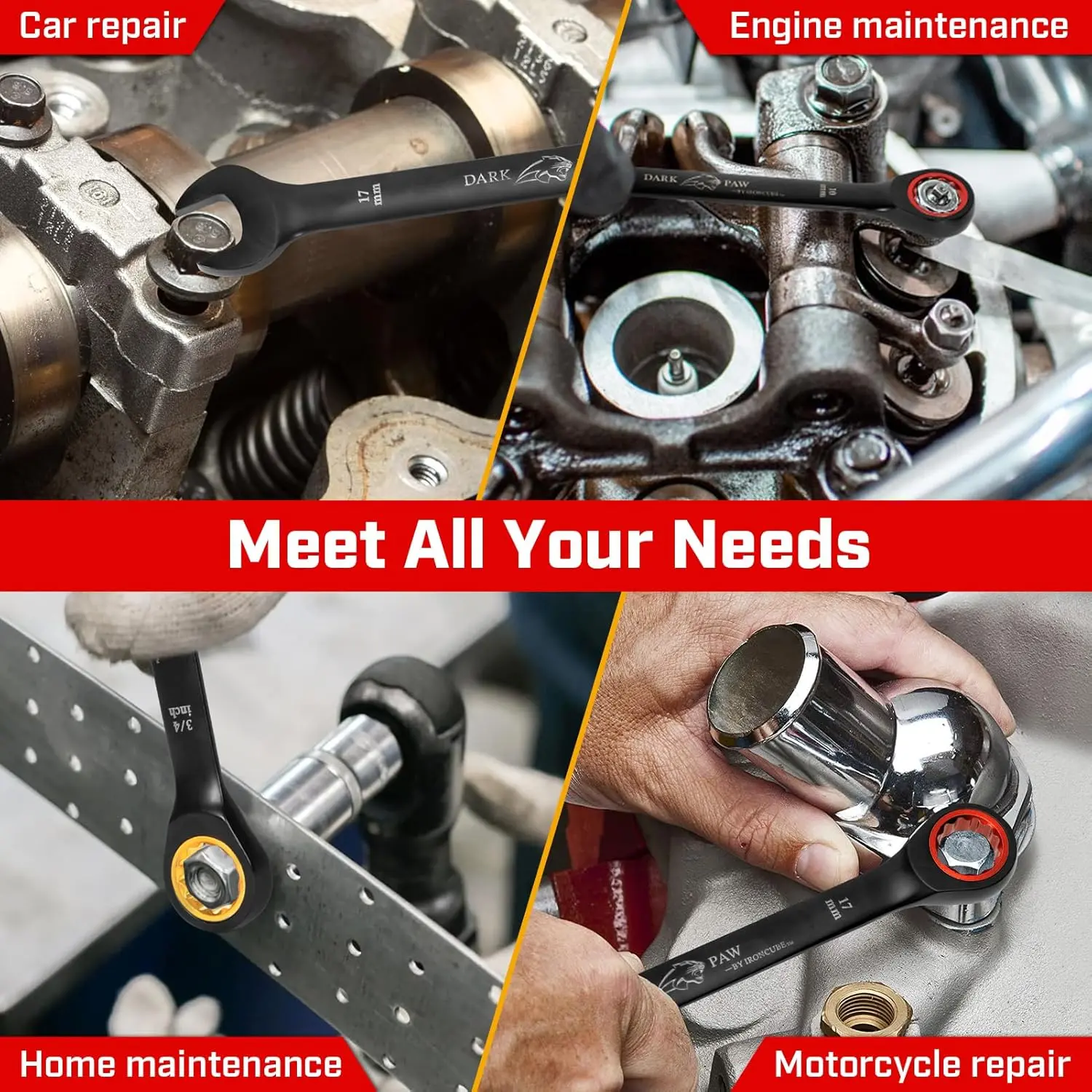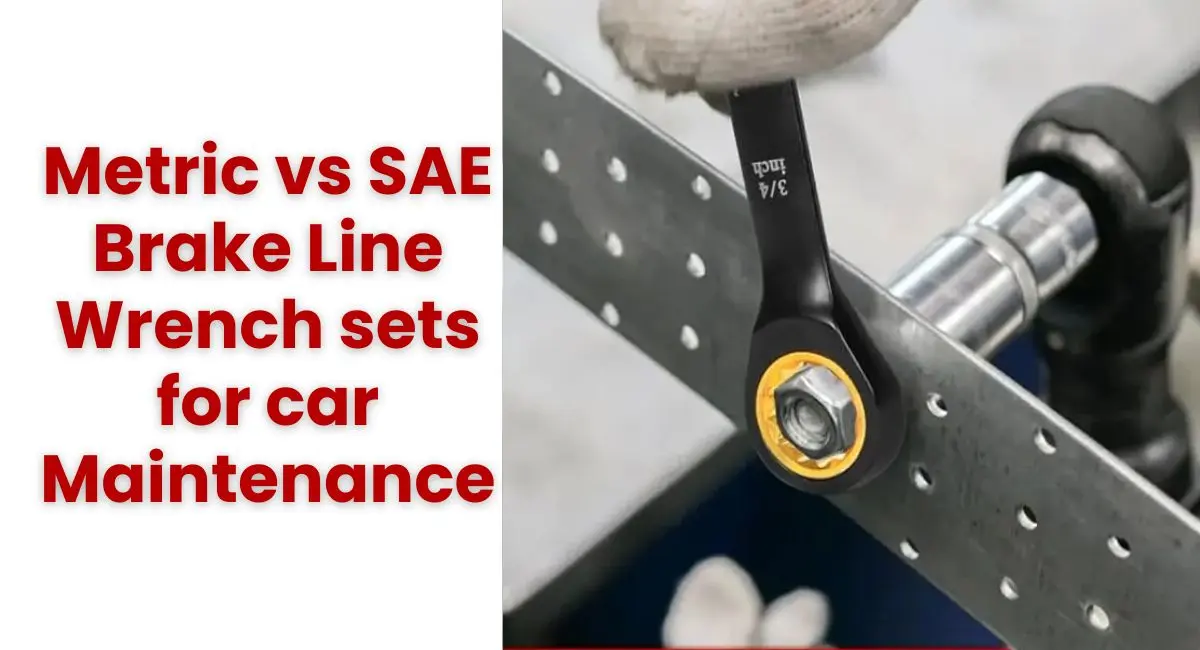When it comes to car maintenance, having the right tools is essential to work efficiently and safely. One of the most important tool categories is brake line wrench sets, which allow for proper handling of brake fittings, tubes, and lines. Understanding the differences between metric vs SAE brake line wrench sets ensures you choose the perfect set for your vehicle and project. This blog provides an in-depth comparison along with practical insights, a conversion chart, and helpful resources to optimize your brake line maintenance.
Understanding the Basics: What Are Metric and SAE Brake Line Wrench Sets?
Before jumping into comparisons, let’s clarify what Metric and SAE mean in the world of wrenches.
-
Metric system uses millimeters (mm) to measure wrench sizes. It’s the standard for most European and Asian vehicles.
-
SAE (Society of Automotive Engineers) system uses inches (or fractions of inches). This system is primarily used in American-made cars.
A brake line wrench set—also known as a flare nut wrench set—is specifically designed to grip the hexagonal fittings on brake, fuel, and hydraulic lines without rounding them off. These wrenches feature an open-end design that wraps around most of the fitting, offering both accessibility and torque.

When shopping for wrench sets, you’ll often find both Metric and SAE versions, such as the Ironcube Brake Line Wrench Set, available for professionals and DIYers alike.
Differences Between Metric and SAE Brake Line Wrench Sets
Understanding the differences between Metric and SAE brake line wrench sets is crucial for selecting the right tool for your vehicle. Here’s a detailed comparison:
Measurement System
- Metric: Measured in millimeters (mm).
- SAE: Measured in inches (in).
Compatibility
- Metric: Ideal for vehicles manufactured in metric system regions, such as Europe and Asia.
- SAE: Best suited for vehicles manufactured in the United States.
Common Sizes
- Metric: Common sizes include 8mm, 10mm, 12mm, 14mm, and 17mm.
- SAE: Common sizes include 5/16”, 3/8”, 7/16”, 1/2”, and 9/16”.
Availability
- Metric: Widely available in regions where the metric system is standard.
- SAE: Easily accessible in the United States and other countries using the imperial system.
Applications
- Metric: Used in vehicles like Toyota, Honda, BMW, and Volkswagen.
- SAE: Used in vehicles like Ford, Chevrolet, and Dodge.
Why the Right Wrench Type Matters for Car Maintenance
Using the wrong wrench on a brake line fitting can lead to rounding, leaks, or damaged threads, all of which can compromise your vehicle’s safety. For instance, using an SAE wrench on a Metric fitting might seem to work, but it can cause minute slips that ruin the bolt head over time.
Choosing the right system ensures:
-
Proper grip and torque application
-
Longer component lifespan
-
Reduced repair costs
-
Improved safety during brake system servicing
When performing tasks like brake bleeding, replacing calipers, or installing new brake lines, investing in a dedicated brake line wrench set from a trusted brand such as Ironcube gives you peace of mind that your fittings will stay undamaged.
Why Choose Ironcube Brake Line Wrench Sets?
At Ironcube Works, we pride ourselves on delivering high-quality tools that meet the needs of both professional mechanics and DIY enthusiasts. Here’s why our brake line wrench sets stand out:
- Durability: Made from premium materials, our wrenches are built to last.
- Precision: Designed for a snug fit, reducing the risk of rounding brake line fittings.
- Versatility: Available in both Metric and SAE sizes to suit various vehicles.
- Ease of Use: Ergonomically designed for comfortable handling.
- Affordability: Competitive pricing without compromising quality.
Explore our range of Metric and SAE brake line wrench sets on our Wrenches Category Page.
Metric to SAE Wrench Size Conversion Chart
A common challenge is translating metric sizes to SAE equivalents. Below is a useful conversion chart for brake line wrenches to guide your purchase or toolbox preparation:
| Metric Size (mm) | SAE Equivalent (inches) | Common Use Example |
|---|---|---|
| 6 mm | 1/4″ | Smaller brake fittings |
| 8 mm | 5/16″ | Common in lighter brake lines |
| 10 mm | 3/8″ | Standard size for many cars |
| 12 mm | 7/16″ | Mid-size fittings |
| 14 mm | 9/16″ | Larger brake lines |
| 17 mm | 11/16″ | Heavy-duty vehicles |
| 19 mm | 3/4″ | Truck brake systems |
For a printable, detailed metric to SAE wrench size conversion chart, visit Ironcube’s conversion chart resource.
Benefits and Limitations of Metric and SAE Sets
Both systems come with features and drawbacks:
Metric Sets:
-
Benefit from international standardization; modern cars worldwide use metric fittings.
-
Easier to find replacement parts internationally.
-
Slight inconvenience if working on older American classic cars.
SAE Sets:
-
Ideal for American and vintage vehicles.
-
May pose compatibility issues on newer international vehicles.
-
Can sometimes be less precise due to fractional sizing.
How to Use Brake Line Wrenches Properly
Correct technique prevents damage and increases longevity of both tools and vehicle parts:
-
Always select the exact wrench size; avoid forcing the wrench.
-
Apply even pressure, turning slowly to avoid rounding fittings.
-
Use penetrating oil on stuck fittings before applying torque.
-
Inspect wrenches regularly for wear or damage.
For advanced wrenching techniques and video tutorials, check Ironcube’s official YouTube channel.
Real-Life Application: Which Cars Use Metric or SAE Wrenches?
Let’s simplify it:
-
Metric: Most modern cars from Japan, Germany, Korea, France, and Italy.
-
Examples: Toyota, BMW, Honda, Hyundai, Volkswagen.
-
-
SAE: Primarily American-made vehicles such as Ford, Chevrolet, Dodge, and Jeep.
If you work in a mixed-garage environment, you’ll likely need both types of wrench sets. That’s where Ironcube’s combination sets shine — giving you options for every repair job.
Where to Buy Quality Brake Line Wrenches?
Purchasing from a reliable source guarantees tool quality and support. Ironcube offers durable, ergonomically designed brake line wrench sets, available on their website or Amazon store:
-
Visit the Ironcube wrench collection for full product selection.
-
Buy direct on Amazon Ironcube Brake Line Wrench Set.
-
Explore customization options at Ironcube Customized Tools.
-
Check warranty and exchange policies at Ironcube Warranty and Exchanges.
Summary
Choosing between Metric and SAE brake line wrench sets depends on your vehicle’s specifications and location. Understanding the differences, applications, and compatibility of these tools is crucial for effective car maintenance. At Ironcube Works, we offer durable and precise wrench sets designed to meet your needs.
Whether you’re a professional mechanic or a DIY enthusiast, having the right tools makes all the difference. Explore our range of Metric and SAE brake line wrench sets on our Wrenches Category Page and take your car maintenance to the next level.
For more tips and tools, subscribe to our YouTube Channel and stay updated with the latest in automotive maintenance.
FAQs
Q: Can I use an SAE wrench on metric fittings?
A: It’s not recommended as slight size differences can damage fittings. Use the correct system for the best fit.
Q: Are brake line wrench sizes interchangeable between brands?
A: Generally yes, if sizes and measurements match, but quality and offset design vary by brand.
Q: What wrenches are best for classic car brake maintenance?
A: SAE sets are usually preferred for American classic cars.
Q: Can I convert between metric and SAE sizes for brake lines?
A: Conversion charts help find close equivalents but may not be exact. Using the exact fit is always safer.
Q: Where can I watch tutorials to learn brake line wrench use?
A: The Ironcube Tools YouTube channel offers helpful hands-on guidance.

